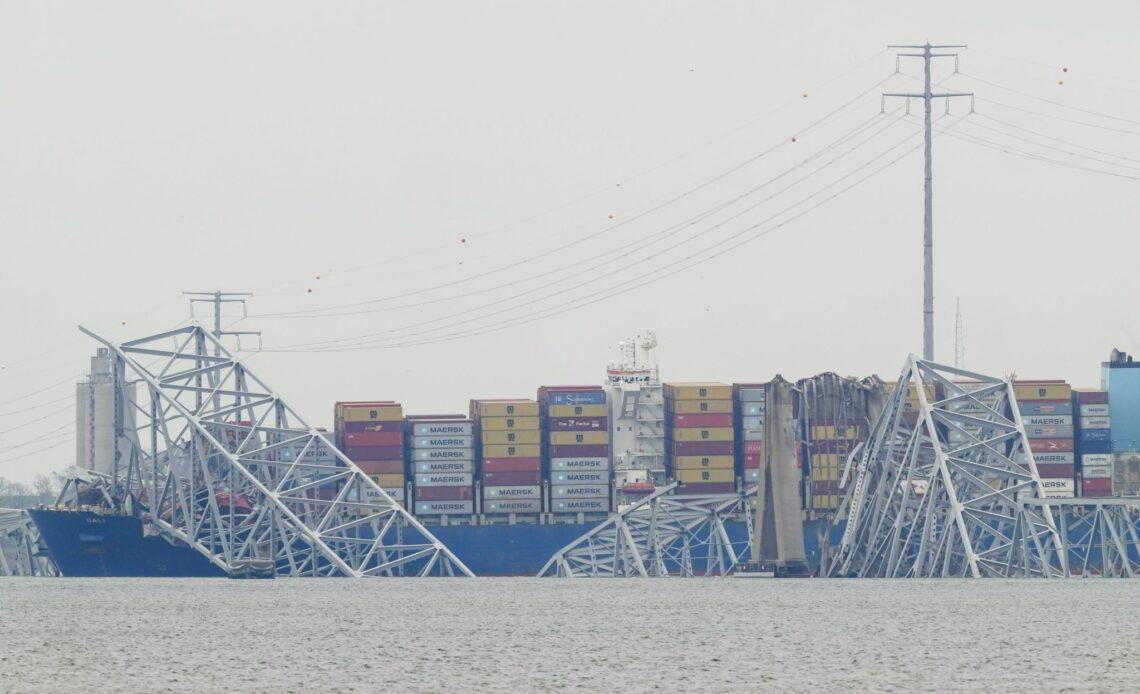The expert pilots who navigate massive ships in and out of Baltimore’s port must often maneuver with just 2 feet (0.6 meter) of clearance from the channel floor and memorize charts, currents and every other possible maritime variable.
The highly specialized role — in which a pilot temporarily takes control of a ship from its regular captain — is coming under the spotlight this week.
Two pilots were at the helm of the cargo ship Dali about 1:25 a.m. Tuesday when it lost power and, minutes later, crashed into a pillar of the Francis Scott Key Bridge, causing the bridge to collapse and kill six construction workers.
While the incident will undoubtedly raise larger questions about ship and port safety protocols, so far there is no indication the pilots on the Dali did anything wrong given the immediate situation they faced. The ship sent out a mayday call, which gave just enough time for authorities to close the bridge to traffic and likely prevented further deaths. The lead pilot also dropped an anchor, issued steering commands and called for help from nearby tugboats, according to a preliminary timeline outlined by the National Transportation Safety Board.
But in the end, maritime experts say, there was likely nothing the pilots could have done to stop the 95,000-ton ship from ploughing into the bridge.
“It’s completely their worst nightmare,” said Capt. Allan Post, the deputy superintendent of the Texas A&M Maritime Academy in Galveston. “It is terrifying to even imagine not being able to control the vessel, and knowing what’s going to happen, and not being able to do anything about it.”
Pilots are local knowledge experts, and they give commands to the bridge team for rudder and engine settings, and for what course to steer, Post said.
U.S. pilots are typically graduates of maritime academies and have spent many years at sea before they join a lengthy apprentice program to learn every aspect of a local area, including memorizing charts, he said.
“A ship’s captain is a general practitioner, if I was to use a medical term,” Post said. “And a pilot would be a surgeon.”
Ship pilots have been working in the Chesapeake Bay since 1640, and the Association of Maryland Pilots currently has 65 active pilots on its books.
The association describes on its website how the bay throws up unique challenges, including that pilots must maneuver container ships that can sit nearly 48 feet (14.6 meters) deep in…
Click Here to Read the Full Original Article at Fortune | FORTUNE…


